Behind the Curtain Wall w/ NYC Architect Richard Roth Jr.: Alexander's
Discover an unlikely friendship that emerged from the design of a lost NYC department store!


The Trylon and Perisphere were the centerpieces of the 1939/1940 World’s Fair in Flushing Meadows-Corona Park. Standing at the center of the fair’s radial street grid (where the Unisphere is now), these sleek and modern structures were inspired by the Crystal Palace and Latting Observatory built for NYC’s very first World’s Fair in Manhattan in 1853 at the site of Bryant Park. Like those structures and most that were built for World’s Fairs, the Trylon and Perisphere were dismantled. Despite our loss of the buildings themselves, the image of the Trylon and Perisphere has endured and we see these symbols pop up throughout New York City, whether adorning the top of a building, on the ground beneath our feet, or even as a gravestone. Here, discover 5 places where the Trylon and Perisphere have been recreated!

Didn't make it to the 1939/40 or 1964/65 fairs? Here's your chance!
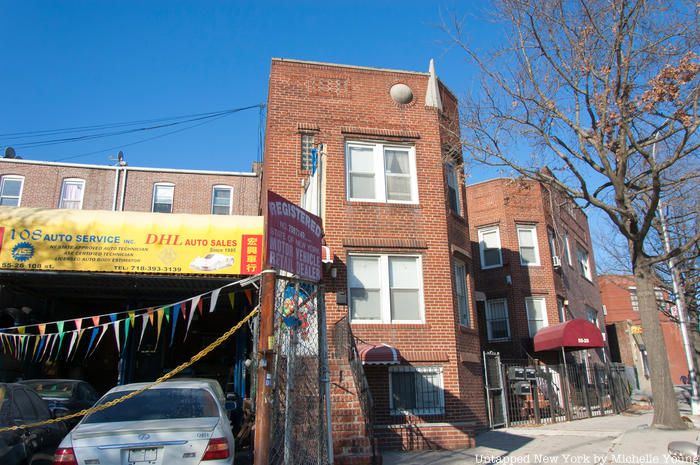
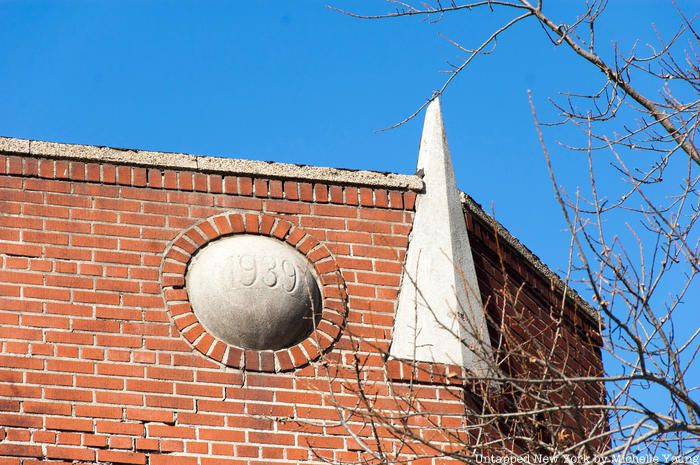
At the top corner of 55-22 108th Street, a brick apartment building in Queens, you’ll see a mini concrete replica of the Trylon and Perisphere. The year 1939 is etched into the rounded surface of the Perisphere shape. Though the building likely pre-dates the fair, these adornments were probably added in the excitement leading up to its opening.
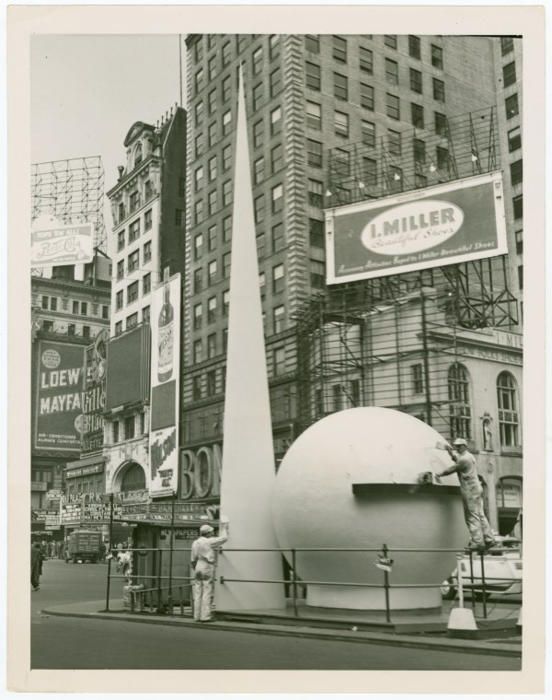
This miniature replica of the Trylon and Perisphere was built as an information booth that stood at the center of Times Square. The eye-catching booth both advertised the fair and provided helpful information about how to get there and what to do when you arrived. The booth stood at 46th Street and Broadway, mere steps away from the headquarters of its sponsor, Loews Metro Goldwyn Meyer. In the photograph above, workers are giving the booth a fresh coat of paint for the upcoming fair season. In the first year of the fair, a reported half a million people visited the booth.
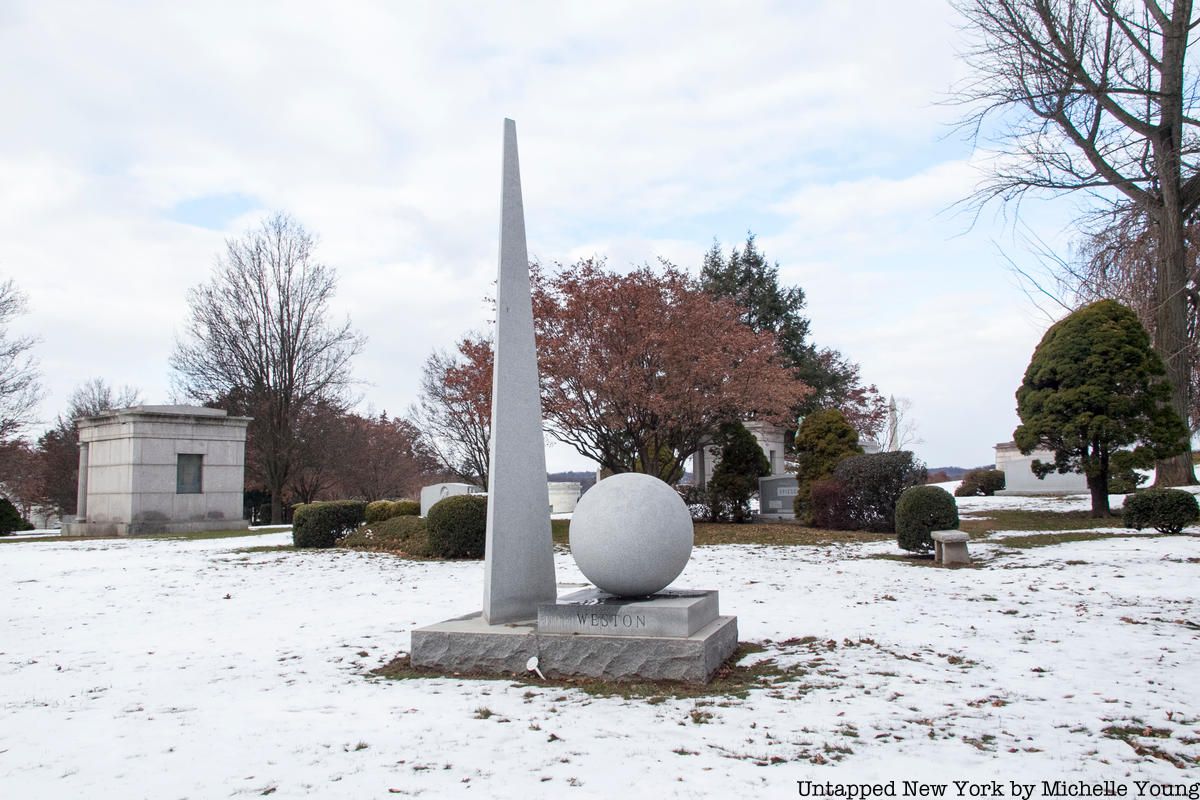
Among the boxy mausoleums and rectangular gravestones of the picturesque Kensico Cemetery in Valhalla, New York, one grave marker stands out from the rest. The grave of Reverend Dr. M. Moran Weston II is marked with a replica of the Trylon and Perisphere. It’s unclear what Weston’s connection to the World’s Fair or these specific buildings was. Weston was a “banker-priest” from Harlem who was one of the first black graduates of Columbia University. He died in 2002. His grave is located at the top of a hill, near the grave of actress Billie Burke who played Glinda the Good Witch in The Wizard of Oz and was married to theater impresario Florenz Ziegfeld, Jr.
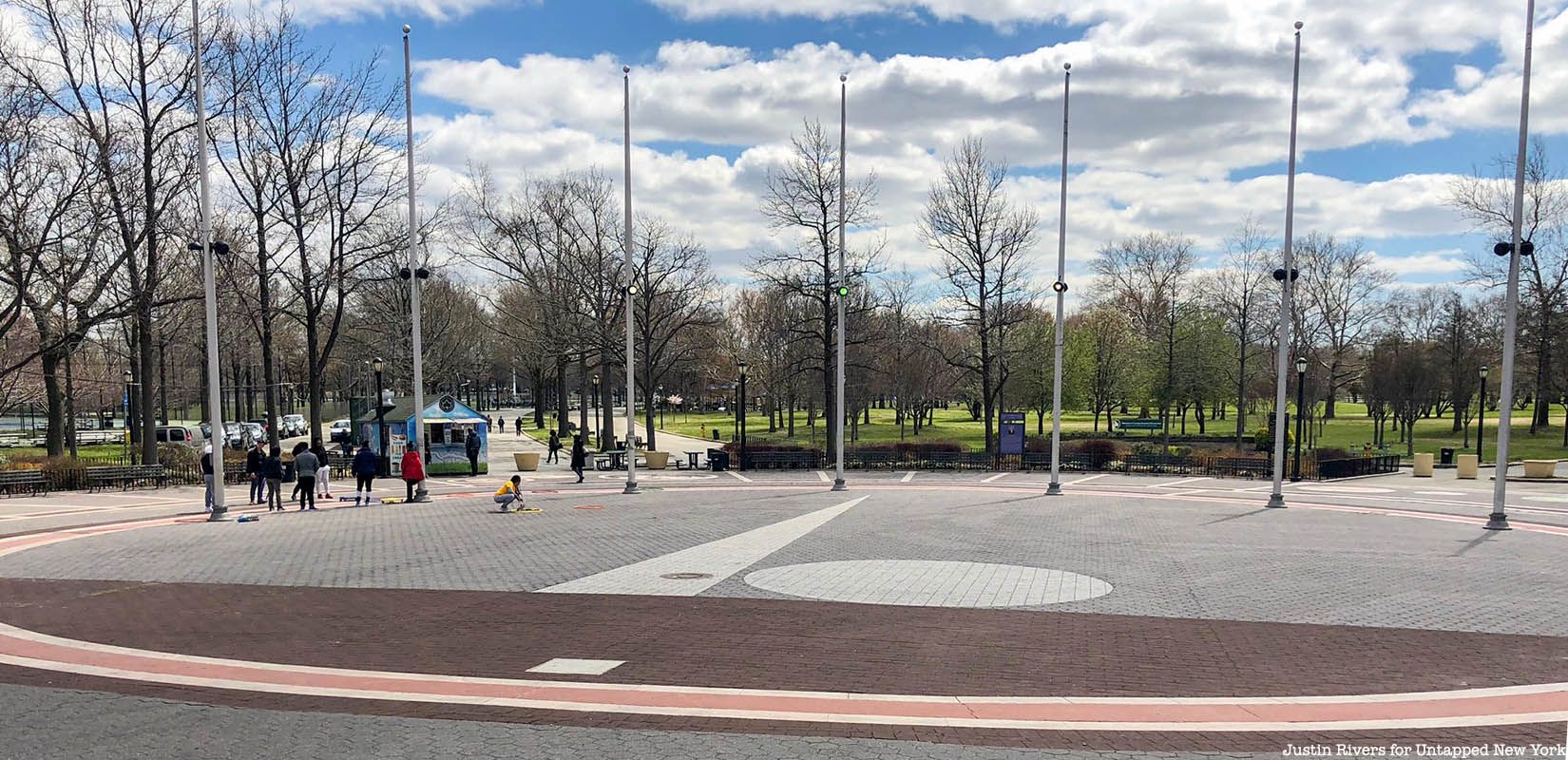
At the circular plaza named for New York City’s first Black mayor, you’ll find a giant, 2-D reproduction of the Trylon and Perisphere on the ground. Located at the east entrance to U.S. Open stadium (Dinkins was a huge tennis fan), the mosaic is created with light-colored paving stones at the center of a circle of flagpoles. David Dinkins Circle also contains a series of colorful mosaics that depict other famous parts of the fair, most notoriously the grinning portrait of Robert Moses.
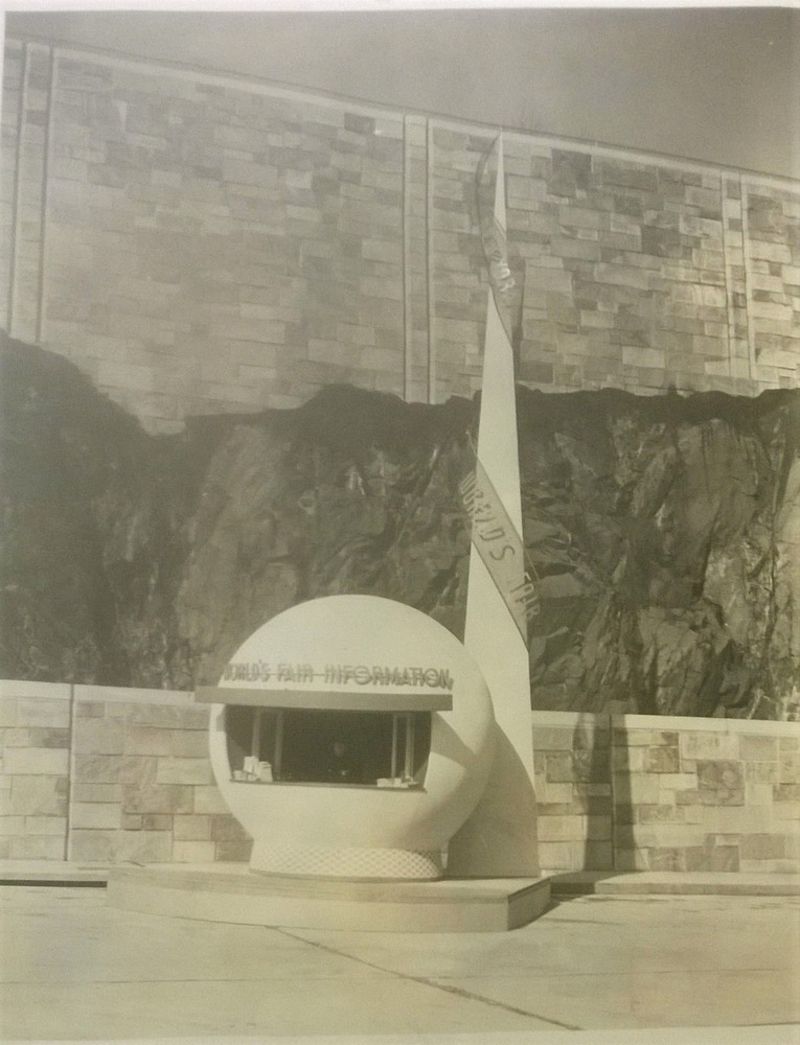
Searching the World’s Fair archives, Untapped New York’s founder Michelle Young came upon a document that described a mini Trylon and Perisphere that were built at the New Jersey entrance to the Lincoln Tunnel. The kiosk was built by the Port Authority and was one of a handful like it erected at the entrances of the Holland Tunnel and George Washington Bridge, the document notes. The note describes the Perisphere-shaped booth as “containing a window counter with space for two clerks, measures 11 feet in diameter” while the Trylon part “is 38 feet high.” The structures were painted “white with red lettering and a blue trim.” The booth was advertised with 27 billboards on the highways which called attention to it and directed motorists toward it. You can see a photo of the booth here!
Learn more about the lost structures of both Queens World’s Fairs and see what physical remnants have been left behind on our upcoming walking tour!
Subscribe to our newsletter